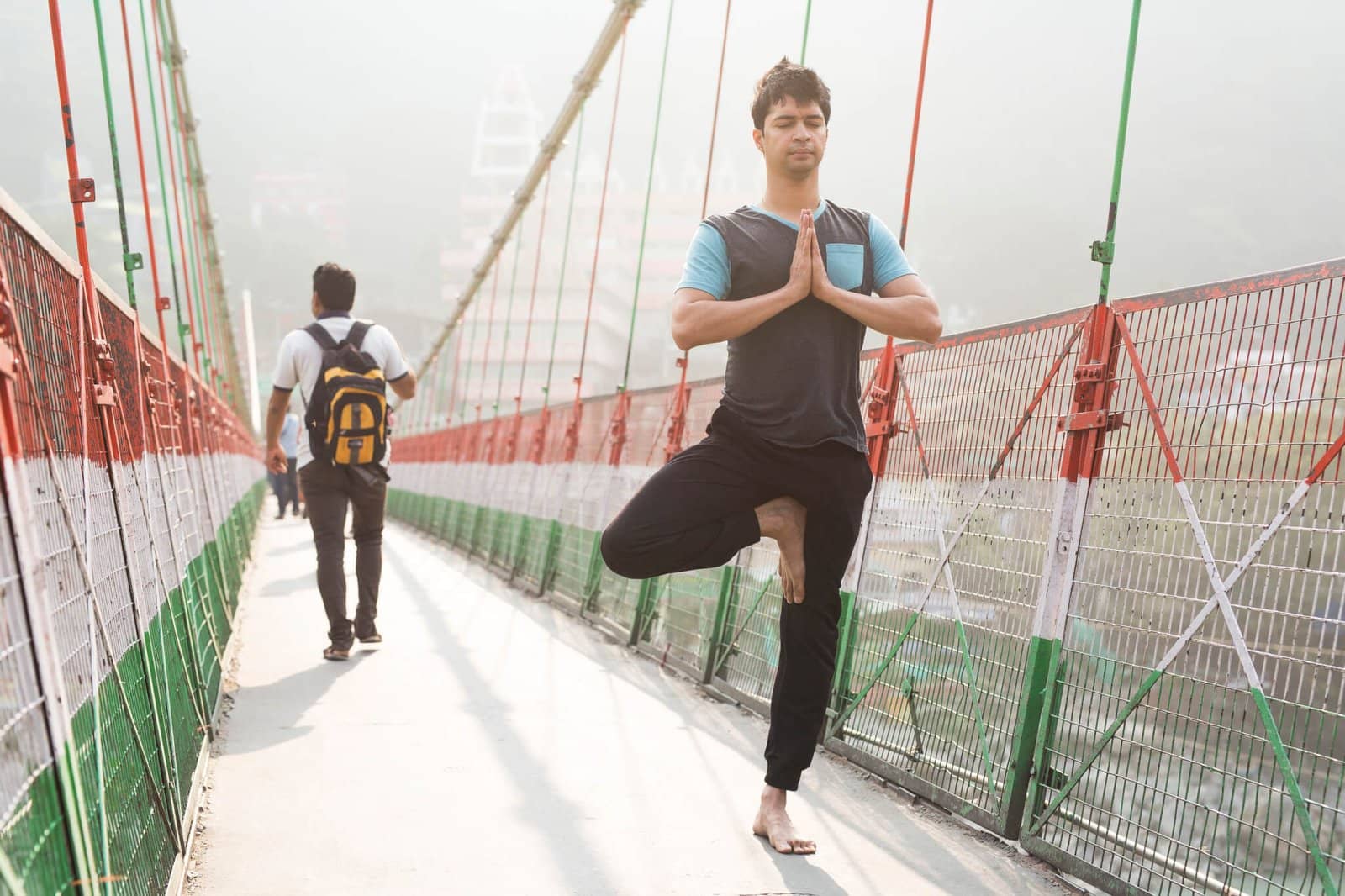Virkshasana - Tree Pose

VRIKSHASANA (Tree Pose)
(vrk-shah-suh-nuh)
The name comes from the Sanskrit words vriksa or vriksha meaning “tree” and asana meaning “posture”. Vrikshasana or tree pose is a wonderful pose that teaches balance while toning the muscles of the legs. This elegant pose is not as easy as it looks, but over time it builds tremendous inner and outer strength and a great feeling of accomplishment as you learn to balance on one leg. Besides being lots of fun, the health benefits of vrikshasana or tree pose are worth the effort and initial challenges of falling out of the pose.
Getting into Tree Pose:
- Stand in Tadasana or mountain pose with your toes and ankles touching, your pelvis perpendicular to the floor, shoulders relaxed and open. The arms are by your side.
-
Ground through your left foot, especially focusing on the big toes joint and then lift your right leg folding at the knee.
- Place the sole of the right foot up against the upper left inner thigh with the toes pointing downwards and the folded leg perpendicular to the standing leg.
- Make sure your hips are even- avoid the temptation to sink into the hip of the standing leg. Once you have established your balance, fold the hands in front of your chest in a prayer position.
- Keep your balance and stretch the arms above your head with your gaze forward or to challenge yourself more, you can close your eyes.
- Once you are more comfortable in this pose you can begin to play with curling the chest back and looking up. Keep the balance and hold for as long as possible. Repeat with the left leg.
Physical Benefits of the Tree Pose (Vrikshasana):
This pose strengthens the leg muscles and helps develop stability. This pose keeps the hip open and stretches the sides of the trunk, lower back and upper back. The arms stretched upwards promotes flexibility of the shoulders.
Life Benefits
Being a balancing pose, Vriksasana requires one to stay focused and present in the moment. As its name suggests, one becomes grounded and stable like the roots of a tree. The roots of a tree go deep into the ground and at the same time the tree rises upwards towards the sky. The more we ground our body towards gravity the same force pushes us upward. Stability of the body and mind is most essential in the practice of yoga. Sage Patanjali clearly states in the Yoga Sutras that yoga is the restraint of the modifications of the mind. When the mind is calm, one is capable of living in peace. A tree gives shade to even the woodcutter who is cutting the tree down. In the same way a yogi is encouraged to develop friendliness (Maitrim) and compassion (Karunya) to all living beings as mentioned in the Yoga Sutras by Sage Patanjali. The practice of this pose can develop a stable and peaceful mind.
Contraindications-
Avoid doing this posture if you are suffering from migraine, insomnia, low or high blood pressure. For those who are frail or elderly, or have osteoporosis, inner ear conditions or balancing issues should take the pose with wall support for a shorter period of time.
